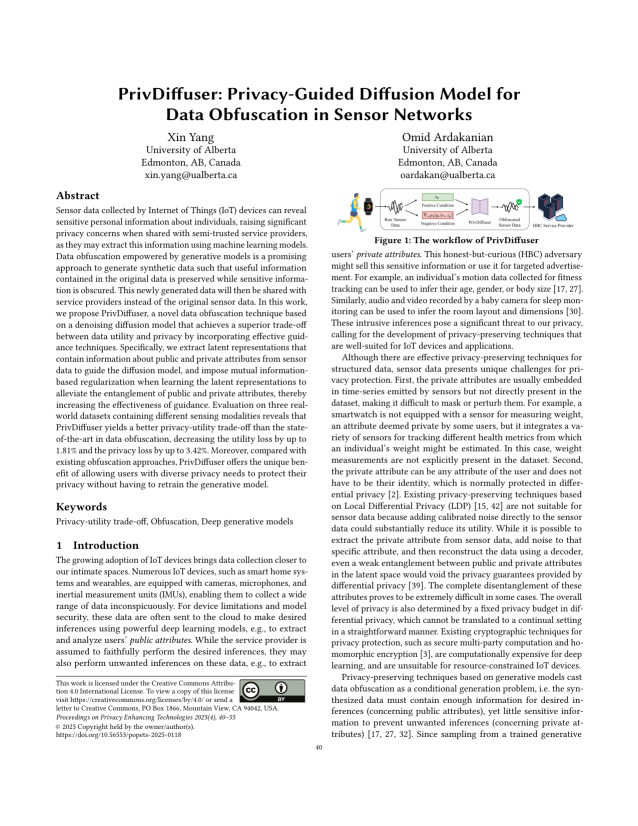PrivDiffuser: Privacy-Guided Diffusion Model for Data Obfuscation in Sensor Networks
Authors: Xin Yang (University of Alberta), Omid Ardakanian (University of Alberta)
Volume: 2025
Issue: 4
Pages: 40–55
DOI: https://doi.org/10.56553/popets-2025-0118
Artifact: Available, Functional, Reproduced
Abstract: Sensor data collected by Internet of Things (IoT) devices can reveal sensitive personal information about individuals, raising significant privacy concerns when shared with semi-trusted service providers, as they may extract this information using machine learning models. Data obfuscation empowered by generative models is a promising approach to generate synthetic data such that useful information contained in the original data is preserved while sensitive information is obscured. This newly generated data will then be shared with service providers instead of the original sensor data. In this work, we propose PrivDiffuser, a novel data obfuscation technique based on a denoising diffusion model that achieves a superior trade-off between data utility and privacy by incorporating effective guidance techniques. Specifically, we extract latent representations that contain information about public and private attributes from sensor data to guide the diffusion model, and impose mutual information-based regularization when learning the latent representations to alleviate the entanglement of public and private attributes, thereby increasing the effectiveness of guidance. Evaluation on three real-world datasets containing different sensing modalities reveals that PrivDiffuser yields a better privacy-utility trade-off than the state-of-the-art in data obfuscation, decreasing the utility loss by up to 1.81% and the privacy loss by up to 3.42%. Moreover, compared with existing obfuscation approaches, PrivDiffuser offers the unique benefit of allowing users with diverse privacy needs to protect their privacy without having to retrain the generative model.
Keywords: Privacy-utility trade-off, Obfuscation, Deep generative models
Copyright in PoPETs articles are held by their authors. This article is published under a Creative Commons Attribution 4.0 license.

